Like almost every industry, automotive manufacturing took a beating early in 2020. Sales dropped as buyers scaled back their spending, and carmakers struggled to keep their assembly lines moving in the face of new safety requirements and supplier disruptions. As a result, a lot of highly anticipated new models have been delayed. But the industry has regained its mojo, and sales are up.
Besides, carmakers have a lot of development pipelines that aren’t easy to turn off. And consumer interest in new technology—particularly in performance cars and electric vehicles—keeps the global appetite strong. Daily commuting may have dropped dramatically in the spring, but people still need, and want, cars.
We researched and vetted models due to arrive on the market next year (or have just landed) that we’re most thrilled about, whether because they debut some new helpful tech, represent a significant development in car-making, or are just capable daily drivers. The rigs here are a reassuring sign that the wealth of options for well-designed and robustly engineered transportation hasn’t waned.
2022 Chevrolet Corvette Z06
The new mid-engine ’Vette, which landed this year and took our Car of the Year award, will likely earn another round of accolades when the track-oriented Z06 arrives later in 2021. The car will deliver more than 600 horsepower from its naturally aspirated V8 (up from the 500 in the conventional Stingray), include wider tires and bigger brakes, and come with boosted chassis strength and a newly tuned suspension. Make no mistake: This variation is a big deal. It takes the “argument” of the base Corvette—that you can have world-class design and engineering delivering thrilling, perfectly balanced performance without the price tag associated with Ferraris, Lamborghinis, and McLarens—and puts a bow on it. It’s not just the engine placement that’s new, either. The Z06 benefits from modernized sensors for monitoring vehicle dynamics, smoother power delivery thanks to engine geometry improvements, better cooling courtesy of improved airflow, and greater downforce as a result of better aerodynamics. Most critically, according to analyst estimates and previous pricing histories, we expect the Z06 to remain under $100,000, (Remember, as well, that when this generation of Corvette was announced as having a mid-engine, people assumed it would cost at least $150,000, given the enhancement and the challenging construction.) In the world of supercars, especially mid-engine supercars, it could be considered a steal.
2021 Volkswagen ID.4
Volkswagen’s first purpose-built electric car—debuting the brand’s widely adaptable, all-electric MEB platform, which is modular for greater adaptability to different vehicle types and designed to simplify electric powertrain hardware—is shaping up to be the EV surprise of the year. First, it’s got a striking design, at once sleek and perhaps a little toy-like, but absolutely eye-catching and attractive. The profile rises toward the rear, lending the car an unmistakably athletic posture, and its interior is clean and bright thanks to the optional glass roof. Second, its electric chops will go a lot further toward winning over consumers than most of the affordable EVs that have debuted thus far. Arriving as a crossover certainly gives it a leg up, but its 201-horsepower, 82-kWh powertrain will make it energetic—though perhaps not a ton of true fun—while delivering an estimated 250 miles of driving range. The magic number for EVs is 300 miles nowadays, but few hit that mark, and 250 is more than enough to match people’s daily driving needs. Plus, its $32,495 starting point—taking into account federal incentives—bring it within reach of most car buyers. To sweeten the pot, VW throws in three years of free, unlimited DC fast-charging at Electrify America stations. Under the right conditions, the car can pull in 60 miles of driving range in 10 minutes, or go from 5 percent to 80 percent in 38 minutes—another incentive for those wary of making the jump to electric power. For these reasons, the ID.4 could very well be the first truly mass-market EV.
Rivian R1T
Tesla’s wedge-shaped, stainless steel-clad Cybertruck is a bit of an acquired taste. Which means people who just want a normal electric pickup truck with have to look elsewhere. The Rivian R1T is the most promising alternative yet, with appealing, fully modern styling without crossing the line into cartoon sideshow. It’s also going to be a killer ride, with four-motor all-wheel-drive, three feet of wading capability, and a startling 0-60 time of 3 seconds. It’s also been tested across some wild terrain recently, including competing in the off-road Rebelle Rally in the U.S. and playing a cameo role in a 13,000-mile South American adventure featured in the Long Way Up television series with Ewan McGregor. The truck should debut in June, at $75,000 for the Launch Edition, bringing 300 miles of (unverified, as yet) range, and semi-autonomous drive capability thanks to 11 cameras, five radars, and 12 ultrasonic sensors. One of the big questions with utility and recreational vehicles such as these is how badly cold weather compromises their range—though Rivian says it has tested the battery between 130 and -25 degrees. On the other hand, that 14 inches of ground clearance and 11,000-pound towing capability will undoubtedly raise the eyebrows of many pickup fans.
2021 Ford Bronco
Ford revealed the new line of Bronco off-roaders in July 2020, when everyone was at peak quarantine fatigue. It would’ve been a big hit for that reason alone, but the burly, retro SUVs like this already have so much going for them. The available 35-inch tires, a broad range of off-road modes for all types of terrain, and a new, advanced 4x4 system have customers already throwing down for reservations for when Broncos arrive at dealers in mid-2021. That 4x4 system is key. It will keep novices out of trouble and allow off-road pros to push their trail bashing to the limit. An electromechanical transfer case shifts automatically between 2H and 4H, eliminating uncertainty about when to engage the former, while electronic front differential locking permits tackling of the gnarliest terrain. Rock-crawling—where precise throttle and brake application is essential—will become easier thanks to a single-pedal drive mechanism that manages both. The seven-speed manual's 94.75:1 crawl ratio will makes rough terrain even easier. If you can’t wait to get your mitts on anything Bronco, you can always pony up for the Bronco Sport, which is out now and is smaller and more affordable. It lacks some of the off-road prowess of the main model, but it certainly won't be a slouch on the trails.
2021 Genesis GV80
As a still-new luxury car manufacturer—parent company Hyundai launched the brand in 2017—Genesis has yet to fully embed itself in the collective consciousness of American car buyers. Though its first three sedans, the G70, G80, and G90, have been critical hits and propelled the company to the top of J.D. Power’s Initial Quality survey in 2018, the new GV80 SUV is likely the car that announces Genesis to the United States market. This has as much to do with U.S. enthusiasm for all things SUV as it does for the look and feel of the car itself. It’s a stylish cruiser with all the luxury amenities you’d expect—a sleek infotainment system, aromatic leather—and it’s arrived with a starting price of $48,900, which makes all that a bit more accessible. Available with either a 2.5-liter, turbocharged, four-cylinder generating 300 horsepower or a 375-hp, 3.5-liter, twin-turbo V6, the GV80 delivers in performance and efficiency. But it’s greatest trick might be something you hardly notice: intense silence. The GV80 uses microphones embedded in each wheel well to detect highway tire roar, and silence it by half, making the cabin up to three decibels quieter. Noise cancellation such as this—in which computers analyze incoming sound and generate “opposite” waves through the car’s speakers—has been in vehicles for a while, but mostly to negate engine noise, which is predictable. Tire noise varies based on the road surface and the condition of the tires, so an advanced system was required for the GV80. The result will likely be a supremely soothing drive, no matter how rough the road.
2022 Volkswagen Golf R
Hot hatchbacks still have a firm place in enthusiast hearts, and the Volkswagen Golf R has always been one of our favorites. A sizable upgrade from the similarly performance-oriented GTI, it’s faster, more powerful, and brings all-wheel-drive to the table, which we expect to be a vital boon to handling. This year’s R adds 27 more horsepower to the four-cylinder turbocharged engine, bringing it to 315, and 310 pound-feet of torque. The final result is a 0-60 sprint of 4.7 seconds and a top speed of 155 mph. VW has worked to tune performance with a new 4Motion all-wheel-drive system that better balances torque distribution and networks with electronic differential locks and the suspension’s adaptive damping—all to tighten up its precision and agility in the curves. Volkswagen pioneered the dual-clutch transmission in the early 2000s, and the seamless acceleration it provides has been adapted by virtually all performance car manufacturers since. In this version of the R, the seven-speed DSG gearbox offers Special and Drift modes to help modulate power to the wheels. This will eliminate the automatic upshifts, which can be a bane to track drivers, and smooth out downshifts when entering turns. Both the GTI and the R have always been hoots to drive, feeling forever light and responsive. The R model brings even more aggressive enhancements to that package.
2021 Chrysler Pacifica AWD
All-wheel-drive delivers most of its benefits under spirited driving, on rough terrain, and in the snow. Chances are, if you’re keen on the feature for your minivan, it ain’t for track days or overlanding near Moab. It’s for snow and ice, to keep the family safe and secure in inclement weather. Unfortunately, AWD has only appeared sporadically among minivans, like the Toyota Sienna. Now, you can get it in Chrysler’s Pacifica. The van is enjoying a bit of a second coming with recent redesigns following the company’s decades-long dominance of the category. Adding all-wheel-drive gives customers something else to love about them. Chrysler’s system isn’t engineered for torque-vectoring its way around the racetrack, but it can deliver 100 percent of power to the rear wheels if necessary, modulating it however needed the rest of the time. That won’t make it a drifter, but it could save you on a slippery road or while trying to slither up a snowy incline, your kids cheering you on from the back. Chrysler also managed to insert the system without compromising its treasured Stow ‘n Go seating, because the driveshaft in the transmission tunnel sits compactly packed in the vehicle’s centerline.
2021 Audi Q4 E-Tron
Audi’s fourth fully electric vehicle, a compact crossover, goes on sale in mid-2021. Characteristically crisp styling should be accompanied by equally crisp handling, thanks to an adaptive suspension and an 82-kWh battery pack that will generate 302 horsepower and push the car to 60 mph in a respectable 6.3 seconds. Along with parent company Volkswagen’s ID.4, the Q4 E-Tron will be the first application of the new MEB platform, which VW developed to help focus its efforts to electrify its assorted brands. Audi has learned from its debut EV, the highly-regarded but slow-selling E-Tron SUV, which means the E-Tron should be a highly capable and seamless electric experience, and a technological powerhouse. Expect a gorgeous and well-thought-out infotainment system in a minimalist interior, easy connectivity, and plenty of safety and driver-assist features, such as emergency collision avoidance. Audi is targeting a range of 280 miles, but that could change pending final EPA analysis. It will also start at around $45,000, making it another semi-affordable luxury EV for a market wary of the cost-premium associated with relatively low-range electric cars.
2022 GMC Hummer EV SUT
In what might go down as the greatest pivot in automotive history, GMC will flip the Hummer—once simultaneously loved and loathed for its obvious contempt for all things environmental—to a fully electric SUV, set to debut at the end of 2021. The three-motor design will generate up to 350 miles of range and as much as 1,000 horsepower, with a 0-60 time of just 3 seconds. The interior looks like it will be a fun place to hang out, with transparent “sky panels” that can be removed for a completely open feel, and GM’s Super Cruise technology that injects hands-free autonomous driving capability on the highway. It remains to be seen how well this first generation of electric, off-road-capable trucks will be able to stick to their range and performance promises, especially factoring in the impact of varied terrain and temperatures. But if GMC is able to follow through on this technology, the Hummer will be a wild ride with little to apologize for.
2021 Hyundai Santa Cruz
Tucked deep inside the mid-sized pickup category sits a subset of truck built via unibody construction, rather than body-on-frame construction. Most pickups use the latter because they enhance body strength, and assist with towing heavy loads and scrambling over rocky terrain. The former integrates the chassis and the body into a single interwoven unit, and it helps with efficiency, weight, and crash safety. The Honda Ridgeline and, soon, the Santa Cruz, are the only pickups to use this strategy. That means Hyundai is aiming the Santa Cruz not at the traditional pickup crowd, but those who are interested in utility—having that handy open cargo space out back—rather than raw power. The Ridgeline has been growing in popularity, and it’s exceptionally comfortable on the highway, so the Santa Cruz will likely be very similar. It will also likely share the Ridgeline’s towing limit of about 5,000 pounds, which will be fine for most, if they tow at all. The truck will be built in Alabama and most likely include a two-liter, turbocharged four-cylinder delivering 235 horsepower, or a beefier 3.8-liter V6 cranking out 291 horses. When the concept debuted in 2015, it had a lot of cool tricks, including an extendable cargo bed and a built-in retractable tonneau cover. Since most trucks tend to have at least one up their sleeve—usually related to the cargo bed—we hope some of those will survive to production.
2021 Mazda CX-30 Turbo
Mazda has been on a design tear in recent years, with its lineup growing ever more elegant. Now, it’s matching that visual prowess with some added oomph. Not only did it bump up the compact hatchback Mazda3 to a 250-hp, 2.5-liter, turbocharged four-cylinder engine, but it’s similarly amping up the CX-30 crossover. That car will receive the same engine and have the additional benefit of all-wheel-drive to help distribute the 320 lb-ft of torque. This promises to make the CX-30 a fun ride, though with an added cost that will likely send the price over $30,000. But in a category that usually feels quite anemic, having a crossover with some guts will undoubtedly make a lot of buyers very happy.
2022 Subaru BRZ
The second generation of this fun and eminently tossable little sports car will arrive later in 2021 with added power and some chassis tweaks that will make it even more fun and tossable. The collaboration with Toyota, which sells its own version as the 86, continues to see the design come mostly from Toyota, while Subaru manages the engineering. In addition to styling refinements, the larger 2.4-liter boxer engine produces 228 horsepower and 184 lb-ft of torque, a 15 percent boost that helps it squiggle out of corners a bit more aggressively. And front-end rigidity has been improved by 60 percent. All this will help drivers keep control and better modulate power delivery while power-sliding around turns. Meanwhile, new Michelin Pilot Sport 4 tires on 18-inch rims stay nice a grippy when cornering without all the wheelspin. Cars like this are a godsend to drivers who want affordable performance that’s nevertheless engineered to a high level, and the BRZ will be a breeze to command through the twistiest of challenges.
2021 Ram Dakota
Full-size pickup trucks have arguably gotten a bit too big, with mile-high grilles, constrained visibility, and the ever-present potential to cause all kinds of mayhem when pedestrians and smaller vehicles are involved in collisions. That’s why we’re happy to see what we hope is a steady right-sizing of pickup trucks, with mid-sized options growing in popularity. Though not officially announced yet, the expected return of the Dodge Dakota—halted in 2011 and now branded as a Ram product—will be a welcome addition. And with an entry-level price tag expected to be around $30,000, it’ll be refreshingly affordable. Power will likely come from a 3.6-liter V6 or a diesel three-liter V6, with an off-road-oriented variant offered to those who might want an alternative to its cousin, the Jeep Gladiator. When it arrives, the Dakota will go up against the Ford Ranger, the Chevy Colorado, and the Toyota Tacoma.
Tesla Roadster
Tesla unveiled its new hypercar in 2017, promising production by 2020. Since then, the company has been silent, apart from occasional tweets from CEO Elon Musk. The truth is that the car has been delayed, in part due to technical challenges surrounding its three-motor powertrain, which will need to be addressed in order to propel the vehicle to its claimed top speed of more than 250 mph, but also because the Roadster simply isn’t a top priority at Tesla. Instead, Musk told podcaster Joe Rogan in May, the company needs to push the Cybertruck across the finish line, ramp up Model Y production, and finish battery manufacturing centers in Berlin and Shanghai. We’ll hope to be able to experience the car’s withering 1.9-second 0-60 time in the real world soon.
This content is created and maintained by a third party, and imported onto this page to help users provide their email addresses. You may be able to find more information about this and similar content at piano.io
"car" - Google News
December 08, 2020 at 02:16AM
https://ift.tt/3lZ9jOG
Best New Cars Coming Out in 2021 | New Car Reviews - Popular Mechanics
"car" - Google News
https://ift.tt/2SUDZWE
https://ift.tt/3aT1Mvb
Bagikan Berita Ini




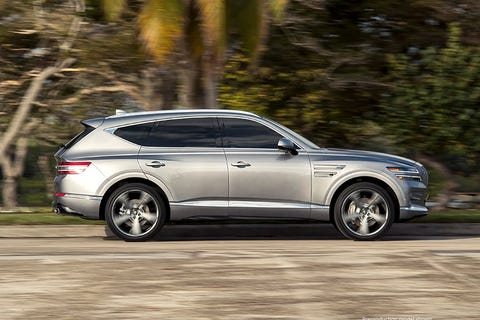

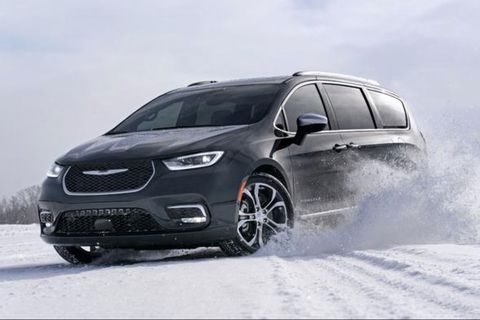

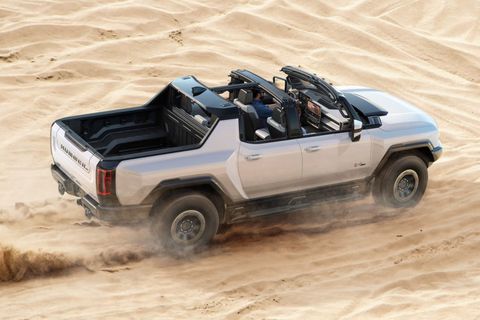
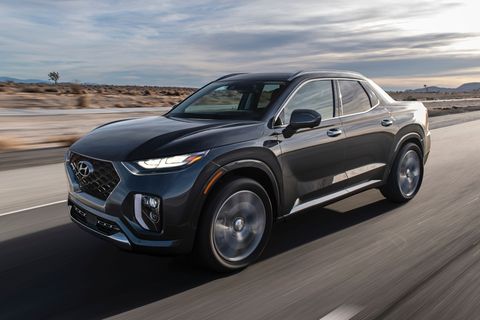

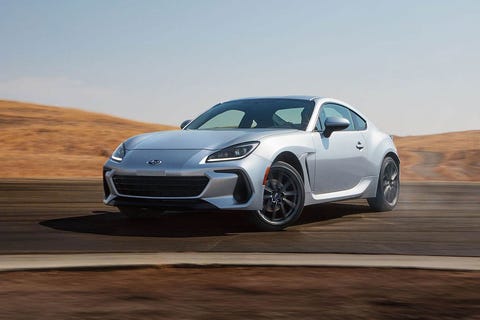
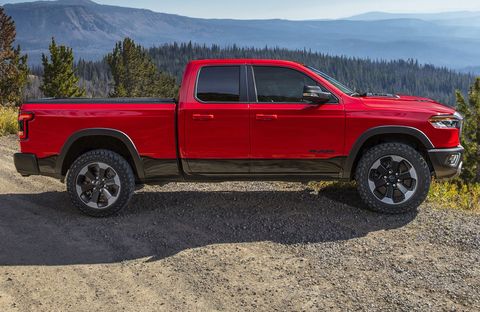
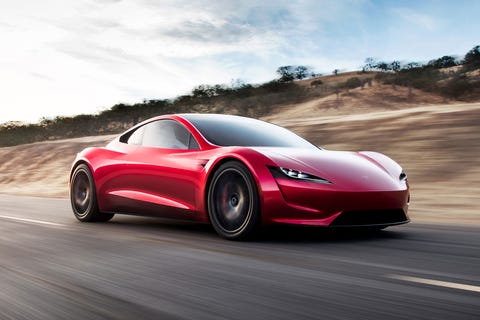














0 Response to "Best New Cars Coming Out in 2021 | New Car Reviews - Popular Mechanics"
Post a Comment